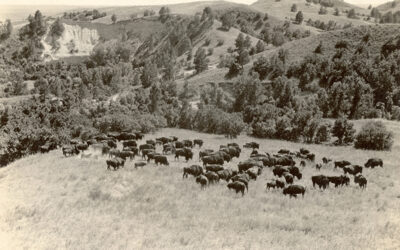Gen. John O’Neill, a native of Ireland and veteran of the American Civil War, beginning in 1874 encouraged Irish immigration to Nebraska. The “general,” a rank bestowed on him by admirers because he commanded three Fenian incursions into British-governed Canada, was the founder of O’Neill in Holt County. Many Irish coming to O’Neill had emigrated to America earlier, temporarily settling in eastern cities.
In 1875 O’Neill’s pamphlet, Northern Nebraska As a Home for Immigrants, was published in Sioux City, Iowa, as a general answer to the thousands of letters O’Neill had received asking for information about the West. It encouraged immigration to Nebraska, including a brief history of the state and a description of the northern Nebraska counties which O’Neill felt would be especially suitable as homes for displaced Irish. He described the geography and climate of the state; procedures for acquiring land under the Homestead Act; and the economic opportunities available in farming and other occupations. He reported that even servant girls were “in good demand all over the state, and receive from $2.50 to $4.50 per week.”
O’Neill recommended that “persons with families should not come West entirely destitute of means to brave the hardships of pioneer life. Many have done so, and have succeeded and in a few years have been numbered among the most influential and well-to-do citizens of the State; but it more frequently leads to disappointment, homesickness and discontent. A capital of $500 or more, after getting West, with which to commence operations, is necessary for a man of family. Single men can get along with less, as their labor is a certain provision for their support. Settlers coming West should dispose of their farming implements and heavy and bulky furniture–bedsteads, tables, mattresses, chairs, crockery, stoves, &c., &c. Stock, teams, wagons, tools of all kinds and farming implements better adapted to this country than those left behind can be purchased here . . . .
“If a man comes West in the spring he builds himself a small house of sods or cottonwood lumber. He then plows a few acres, and plants corn or potatoes in the sod. His cow is staked in a rich bottom, his patch of green vegetables grows in front of his door, and four months after his arrival at his new home he is home indeed, with food growing on his own farm for his family and his cattle.”



